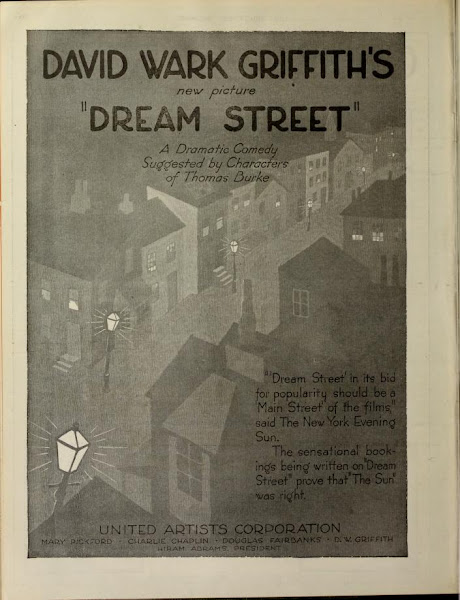
Scott Lord on the Silent Film of Greta Garbo, Mauritz Stiller, Victor Sjostrom as Victor Seastrom, John Brunius, Gustaf Molander - the Golden Age of Swedish Silent Film........Lost Films in Found Magazines: Victor Seastrom directing John Gilbert and Lon Chaney, the printed word offering clues to deteriorated celluloid, extratextual discourse illustrating how novels were adapted to the screen; the photoplay as a literature, a social phenomenon; how it was reviewed, audience reception.
Wednesday, January 31, 2024
Scott Lord Silent Film: La Vie et la passion de Jésus Christ (1903)
Greta Garbo Victor Sjostrom Silent Film
Scott Lord on Silent Film, Scott Lord on Swedish Film, Scott Lord on Mystery Film
at
2:21:00 AM
No comments:
Greta Garbo Victor Sjostrom Silent Film
Biblical Drama ,
Scott Lord Silent Film,
Silent Film,
Silent Film 1903,
Silent Film Biblibal Drama,
Silent Film Biblical Drama
 Scott Lord on Silent Film, Scott Lord on Swedish Silent Film, Scott Lord on Danish Silent Film
Scott Lord on Silent Film, Scott Lord on Swedish Silent Film, Scott Lord on Danish Silent Film
Scott Lord Silent Film: The Miracles of Jesus (Mogul Film Company, 1910)
Greta Garbo Victor Sjostrom Silent Film
Scott Lord on Silent Film, Scott Lord on Swedish Film, Scott Lord on Mystery Film
at
2:21:00 AM
No comments:
Greta Garbo Victor Sjostrom Silent Film
Biblical Drama ,
Silent Film 1910,
Silent Film Biblibal Drama,
Silent Film Biblical Drama
 Scott Lord on Silent Film, Scott Lord on Swedish Silent Film, Scott Lord on Danish Silent Film
Scott Lord on Silent Film, Scott Lord on Swedish Silent Film, Scott Lord on Danish Silent Film
Scott Lord Silent Film: The Birth, the Life and the Death of Christ (Ali...
Greta Garbo Victor Sjostrom Silent Film
Scott Lord on Silent Film, Scott Lord on Swedish Film, Scott Lord on Mystery Film
at
2:18:00 AM
No comments:
Greta Garbo Victor Sjostrom Silent Film
Biblical Drama ,
Silent Film,
Silent Film 1906,
Silent Film Biblical Drama
 Scott Lord on Silent Film, Scott Lord on Swedish Silent Film, Scott Lord on Danish Silent Film
Scott Lord on Silent Film, Scott Lord on Swedish Silent Film, Scott Lord on Danish Silent Film
Tuesday, January 30, 2024
Scott Lord Silent Film: Helen Holmes in The Wild Engine (1915)
Greta Garbo Victor Sjostrom Silent Film
Scott Lord on Silent Film, Scott Lord on Swedish Film, Scott Lord on Mystery Film
at
9:48:00 PM
No comments:
Greta Garbo Victor Sjostrom Silent Film
Silent Film,
Silent Film 1915,
Silent Serials
 Scott Lord on Silent Film, Scott Lord on Swedish Silent Film, Scott Lord on Danish Silent Film
Scott Lord on Silent Film, Scott Lord on Swedish Silent Film, Scott Lord on Danish Silent Film
Saturday, January 20, 2024
Scottt Lord Silent Film: Dream Street (D. W. Griffith, 1921)
"There is nothing of interest I can tell you about myself." A year later, Photoplay Magazine caught up with Carol Dempster and she purportedly used the exact same words, "There is nothing of interest I can tell you about myself.". Photoplay Magazine deigned her to be The Mystery Girl of the Movies. Photoplay journalist Dorothy Herzog quotes D.W. Griffith as having said that Dempster was cast in he film "Dream Street" (ten reels) for her dancing ability, "Anyone with the poise and grace to necome such a potentiality as a dancer undoubtedly had the ability to rise to similiar heights in an allied art if properly developed."
"Dream Street" was photographed by cameraman Henrik Sartov for D.W. Griffith, Inc and United Artists in 1921.
D. W. Griffith
D.W. Griffith
In his volume The Films of D.W. Griffith, author Edward Wagenkneckt discounts the lofty intentions of D.W. Griffith in an attempt to lower the director from his crepuscular inaccessible Pantheon, "His "higher" thoughts were often inseperable from the popular ladies' journals of the time. When he made homey philosophical observations, greta charm and loveliness often resulted; but but when he decided to tackle big subjects like like the principles of Good and Evil, he seemed sophmoric. Of course, Griffith's ideas were more sophisticated than the script for Dream Street suggests (his play The Treadmill shows that), but when he tried to reduce his already cliche themes to the audience's level, he somehow lost the poetry and naivete and kept only the didacticism."
Edward Wagerknect adresses Griffith's filmmaking technique in "Dream Street" by noting that Billy Bitzer would often light a set flatly whereas there were "pools of light and deep shadows" in "Dream Street", to which Wagerknect attributes it having been shot entirely in the studio.
D.W. Griffith D.W. Griffith D.W. Griffith
Greta Garbo Victor Sjostrom Silent Film
Scott Lord on Silent Film, Scott Lord on Swedish Film, Scott Lord on Mystery Film
at
9:29:00 PM
No comments:
Greta Garbo Victor Sjostrom Silent Film
D.W. Griffith,
Silent Film,
Silent Film 1921
 Scott Lord on Silent Film, Scott Lord on Swedish Silent Film, Scott Lord on Danish Silent Film
Scott Lord on Silent Film, Scott Lord on Swedish Silent Film, Scott Lord on Danish Silent Film
Scott Lord Silent Film: Lillian and Dorothy Gish in Hearts of the World (D.W. Griffith 1918)

In "Hearts of the World" (twelve reels, 1918) D.W. Griffith during a scene in which soldiers are marching, used reversed direction cutting, which he had briefly used in "A Girl and Hard Trust (1912). Matching the screen direction when the camera cut had often preserved continuity in early silent cinema. The volume Motion Picture Directing, written in 1922 by Peter Milne, after having described D. W. Griffith's method of working without a script or continuity, then suprisingly adds that Griffith was not only interested with putting spectacle on the screen, but was attentive to the drama surrounding the characters, drama that might deepen or change the characters being developed, "He brought before the eye all the horrible realities of the battlefield, used them to dramatic prupose time and time again. And yet in the midst of all this spectacular action he never for once lost sight of the personal element of the story, this element represented on the battlefield by Robert Harron, who played the part of the young soldier."
Despite episodes of crosscutting, author William K. Everson suprisingly writes of there being "evidence" that a substantial amount of "Hearts of the World" was not only written but directed by Eric von Stroheim.
In her volume D.W. Griffith, American film master, Iris Barry, who seems to study Griffith's films by comparing one to another, disagrees with the idea of one Griffith masterpiece over shadowing the one that had come before, writing, "T'Hearts of the World' must be judged as a prpoaganda film and as such it is very effective; but otherwise it seems on the whole, disappointing. One looks in vain for the passionate momentum of its immediate predecessors....The film, however, was a personal triumph for Lillian Gish, as the distraught heroine, for her sister Dorothy in a comedy role and for Eric von Stroheim as a German officer." After filming “Hearts of the World”, D.W. Griffith featured actress Lillian Gish in another drama set during World War I, “The Great Love” (1918). The film is lost with no copies surviving. Photographed by G.W. Bitzer, it was produced by Famous Players Lasky. There are also thought to be no surviving copies of the film "The Greatest Thing in Life", also directed during 1918 by Griffith, photographed by G.W. Bitzer and also starring Lillian Gish.
Lillian and Dorothy Gish D. W. Griffith D. W. Griffith
Greta Garbo Victor Sjostrom Silent Film
Scott Lord on Silent Film, Scott Lord on Swedish Film, Scott Lord on Mystery Film
at
3:44:00 PM
No comments:
Greta Garbo Victor Sjostrom Silent Film
D.W. Griffith,
LIllian GIsh,
Scott Lord Silent Film,
Silent Film,
Silent Film 1918,
Silent Film D.W. Griffith
 Scott Lord on Silent Film, Scott Lord on Swedish Silent Film, Scott Lord on Danish Silent Film
Scott Lord on Silent Film, Scott Lord on Swedish Silent Film, Scott Lord on Danish Silent Film
Scott Lord Silent Film: Civilization (Thomas H Ince, 1915)




Linda A. Griffith, wife of D.W. Griffith, in an autobiographical article for the periodical Film Fun Magazine during 1917, not only reminisced of Thomas Ince having spent time at the Biograph Studios, but also of his wife, actress Eleanor Kershaw, having spent her short lived on screen career with the Biograph Film Company. By the time of its publication, Eleanor Kershaw had left silent film acting to devote herself to being the mother of three children.
In a similar way that H.G. Wells depicts idyllic ante-bellum England as being a remote and isolated unsuspecting participant it the sudden outbreak of World War I, perhaps Iris Barry hints that the idea of war was new to modern America "But for the moment the United States was preparing to enter the European war: J.Stuart Blackton's pro-war and anti-German The Battle Cry of Peace and Thomas Ince's anti-war and anti-German Civilization had already indicated the uses to which films might be put and now it was the moment for propaganda for the Allied cause." The propaganda of the time period seemed abruptly more direct, more explicit than yellow journalism and propaganda of American Imperialism in the Phillipines decades earlier. Iris Barry later credits Thomas Ince and D.W. Griffith as having "taught the Scandinavians to use an isolated face or guesture as a unit of expression rather than (as on stage) the actor".
Silent Film Intolerance The Invaders
Greta Garbo Victor Sjostrom Silent Film
Scott Lord on Silent Film, Scott Lord on Swedish Film, Scott Lord on Mystery Film
at
12:36:00 PM
No comments:
Greta Garbo Victor Sjostrom Silent Film
Scott Lord Silent Film,
Silent Film,
Silent Film 1915,
Thomas Ince
 Scott Lord on Silent Film, Scott Lord on Swedish Silent Film, Scott Lord on Danish Silent Film
Scott Lord on Silent Film, Scott Lord on Swedish Silent Film, Scott Lord on Danish Silent Film
Thursday, January 11, 2024
Scott Lord Silent Film: fragment The Centaurs (Cartoonist Winsor McCay, ...
Greta Garbo Victor Sjostrom Silent Film
Scott Lord on Silent Film, Scott Lord on Swedish Film, Scott Lord on Mystery Film
at
2:56:00 AM
No comments:
Greta Garbo Victor Sjostrom Silent Film
Silent Film 1921
 Scott Lord on Silent Film, Scott Lord on Swedish Silent Film, Scott Lord on Danish Silent Film
Scott Lord on Silent Film, Scott Lord on Swedish Silent Film, Scott Lord on Danish Silent Film
Wednesday, January 10, 2024
Greta Garbo Trade Magazine Covers















Greta Garbo
Greta Garbo
Greta Garbo
Greta Garbo
Greta Garbo and Victor Sjostrom
Greta Garbo
Lon Chaney- Silent Film
Silent Film
Back to top: Greta Garbo Extra Textual Discourse Magazines
Greta Garbo Victor Sjostrom Silent Film
Scott Lord on Silent Film, Scott Lord on Swedish Film, Scott Lord on Mystery Film
at
11:08:00 PM
No comments:
Greta Garbo Victor Sjostrom Silent Film
Garbo,
Greta Garbo,
Greta Garbo Actress,
Greta Garbo Extratextual Discourse,
Greta Garbo Magazine Covers,
Greta Garbo Photoplay,
Greta Garbo Silent Film,
Scott Lord Silent Film
 Scott Lord on Silent Film, Scott Lord on Swedish Silent Film, Scott Lord on Danish Silent Film
Scott Lord on Silent Film, Scott Lord on Swedish Silent Film, Scott Lord on Danish Silent Film
Subscribe to:
Comments (Atom)











